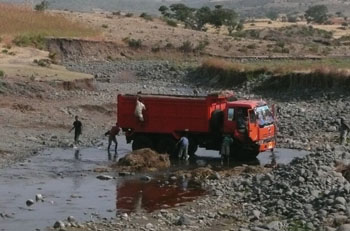17.1 Sources of water pollution
Water is a good solvent. This is the reason why many different chemical substances are found dissolved in water. Gases in the atmosphere will dissolve in rainwater as it passes through the air. By the time water reaches a stream or river, it will contain a variety of chemical compounds dissolved within it from the air and from the rocks and soil through which it has percolated. These compounds may be completely harmless, naturally occurring substances, but they may also include pollutants.
Pollution can be defined as the introduction into the natural environment (air, water or land) of substances (pollutants) that are liable to cause harm to human health or to animals, plants and the wider environment. Water pollution occurs when a river, lake or other body of water is adversely affected due to the addition of pollutants (Figure 17.1).
Water quality can be affected by pollution from point sources and non-point sources. Point sources are identifiable points or places, such as a pipe or channel, which discharge directly into a body of water. This might be from wastewater treatment plants, factories and industrial plants, latrines, septic tanks or piped discharge from barnyards and other places where livestock are confined. Non-point sources are those where pollution arises over a wider area and it is often difficult to locate the exact place of origin. For example, fertiliser or pesticide washed from a field by rain may seep into a river or stream at many places both on the surface and through the soil. Pollution from non-point sources, also known as diffuse pollution, contributes most of the contaminants in rivers and lakes. Other non-point sources are pollution from construction sites and other land disturbances. The problems in identifying the exact point of origin make non-point sources much more difficult to control.

Look at Figure 17.1. What pollutants are likely to be washed into the river from the lorry? Is this a point source or non-point source of pollution?
Dust and dirt from the lorry will be washed into the river. Some oil and fuel may also be washed from the underside. The lorry is the single source of pollution so this is an example of a point source.
Learning Outcomes for Study Session 17
